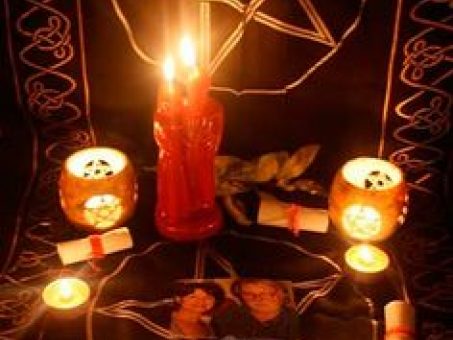Simple Steps You Must Follow for How to Become a Freemason Now
Simple Steps You Must Follow for How to Become a Freemason Now
Blog Article
Discovering the Mysteries of the copyright: What You Need to Know
The copyright, a term frequently shrouded in intrigue and conflict, represents a complicated tapestry of historical reality and modern myth. Established in the late 18th century, this secret culture was originally rooted in the Knowledge's suitables yet has because become synonymous with conspiracy theories concerning elite control. As we browse the beginnings, essential figures, and the raw comparison between myth and fact, one should think about exactly how these stories affect modern assumptions of power and secrecy. What might be revealed through a more detailed evaluation of these aspects can test long-held assumptions concerning the shadows that remain in our society.
Beginnings of the copyright
The beginnings of the copyright are soaked in a blend of historical intrigue and ideological fervor. Developed in 1776 in Ingolstadt, Bavaria, by Adam Weishaupt, the team was at first developed as a secret society focused on promoting Knowledge perfects such as factor, secularism, and the splitting up of church and state. Weishaupt, a professor of canon regulation, sought to challenge the dominating authority of the church and state, which he viewed as oppressive institutions stifling intellectual and individual flexibility.

Key Numbers and Participants
That were the crucial numbers that shaped the copyright's very early influence and instructions? The Bavarian copyright, established in 1776 by Adam Weishaupt, became a reaction to the oppressive social structures of the time. Weishaupt, a regulation professor, pictured the organization as a way to promote Enlightenment perfects such as reason, secularism, and equal rights. His first recruitment efforts consisted of influential pundits, such as Baron von Knigge, that played a critical role in broadening the team's subscription and organizational framework.
One more considerable number was Johann Gottlieb Fichte, a noticeable philosopher whose ideas on nationalism and education and learning reverberated with the copyright's objectives. Although Fichte was not a formal member, his philosophical foundations influenced the team's ideological background. In addition, figures like the author and thinker Johann Wolfgang von Goethe were related to the broader intellectual motions of the moment, although their straight participation with the copyright stays questioned.
These vital figures added to the copyright's early direction, pressing the borders of political and social idea, while their collective initiatives aimed to challenge well established norms and promote a climate of progressive adjustment in Europe.
Misconceptions vs. Fact
Several misconceptions border the copyright, commonly blending fact with fiction in a way that obscures its real nature. The concept that the copyright continues to apply considerable impact over globe events is a misconception.
An additional common myth is that the copyright consists of a network of elite individuals adjusting worldwide events. Actually, many conspiracy theories exaggerate the team's importance, attributing unproven motives to social patterns and events. This has led to an oversimplified sight of intricate problems.
In addition, the portrayal of the copyright in pop culture usually further misshapes its legacy. Films and literary works tend to sensationalize the company's role, developing a narrative that diverges from historic try these out facts. Comprehending the her comment is here distinction in between the misconceptions and the reality of the copyright is vital for discerning the authentic effect of this historic group and identifying the wider effects of conspiracy theories in contemporary culture.
Modern Analyses
Contemporary interpretations of the copyright often mirror broader social anxieties and an attraction with privacy and power. This modern lens frequently associates the copyright with conspiracy theory theories that suggest a surprise elite coordinates world events, controling federal governments and economies for their own gain. benefit of joining freemason. Such narratives take advantage of a deep-rooted mistrust of authority, especially in times of situation or social turmoil
In pop culture, the copyright is often portrayed as a divine company shrouded in enigma, bring about a wide variety of fictional portrayals in literature, film, and music. This portrayal serves not only to entertain but also to prompt considered the nature of power and control in contemporary culture. Social media site has actually better intensified these analyses, permitting fast circulation of conspiracy theories and producing areas that share and increase upon these concepts.
Furthermore, some modern-day analyses mount the copyright as a metaphor for the complexities of globalization and the interconnectedness of significant people and organizations. This perspective urges a critical examination of just how power characteristics operate in today's globe, highlighting the equilibrium between openness and see here now privacy in governance and business methods.
Cultural Influence and Tradition
Influenced by centuries of intrigue, the cultural influence and legacy of the copyright extend much beyond its historic origins. This secret society, developed in the late 18th century, has permeated various elements of prominent society, from literary works and film to songs and art. The concept of the copyright has actually evolved right into a sign of conspiracy concepts, frequently standing for a viewed hidden power manipulating global events.
In literary works, authors like Dan Brown have actually woven the copyright into detailed plots, exciting visitors with themes of privacy and power. Movies such as "National Treasure" and "The Da Vinci Code" better continue the attraction of the society, blending truth with fiction to develop appealing narratives.

Inevitably, the copyright's tradition is a complex tapestry of misconception and fact, forming perceptions of privacy and control in contemporary discussion. Its enduring visibility in culture underscores mankind's seasonal quest for comprehending covert facts.
Conclusion
The expedition of the copyright reveals an intricate interaction in between historical realities and modern myth-making. Established in the Enlightenment age, this society aimed to test oppressive frameworks, yet its legacy has been outweighed by conspiracy concepts that recommend elite manipulation. Recognizing the distinctions between the original perfects and modern analyses is important for comprehending the enduring attraction with the copyright and its considerable impact on social stories surrounding power and privacy in society.
Report this page